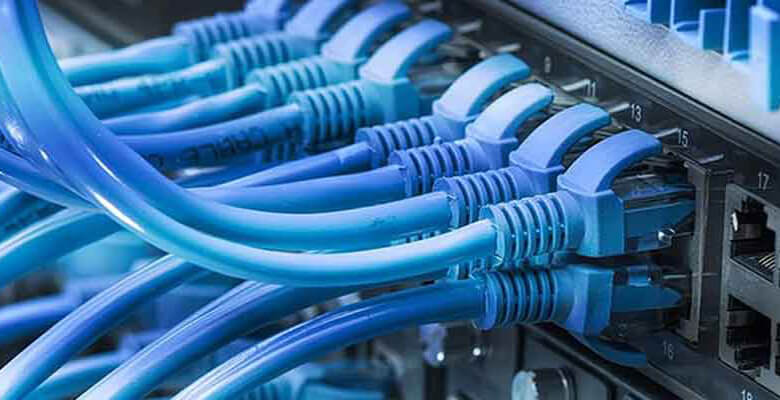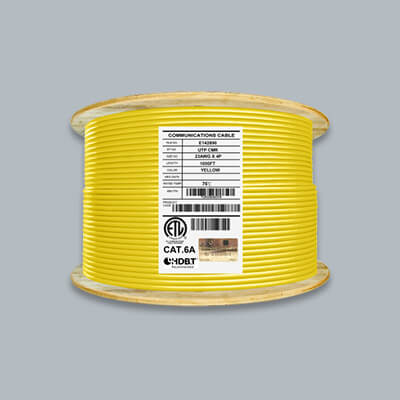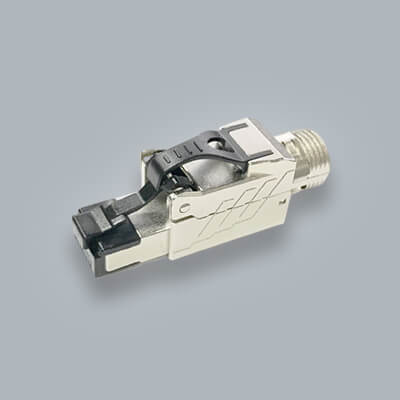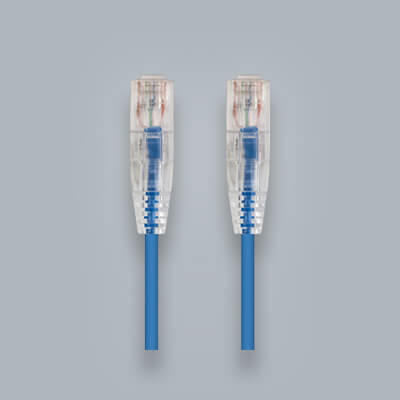What Is An Ethernet Cable?

Table of Contents
- What Is An Ethernet Cable?
- Why Do I Need An Ethernet Cable?
- Ethernet Cable Categories
- What Does An Ethernet Cable Look Like?
- The Benefits Of Hard Wiring Your Devices With Ethernet
Intro
If you are in school, enjoy gaming, work in an office of any form, or simply own a router or desktop commuter, utilizing an ethernet cable is truly just standard practice. They are so common you might not even be aware of how much they are actually used. But, what is an ethernet cable? What is its actual function? And does the type of cable you get matter?
Ethernet cables are incredibly versatile cables that might seem old school but are actually incredibly valuable even though they were invented nearly 40 years ago. It is a technology that has withstood the test of time despite all of the other incredible technological advancements since the 1980's when it was first released. In this article we will cover everything there is to know about what is an ethernet cable?
What Is An Ethernet Cable?

In its simplest form, an ethernet cable connects two physical devices, such as a router, computer, printer, fax, gaming console or TV which will then provide direct access, or hard-wired internet to said device. While Wi-Fi is a truly amazing way to connect to the internet on the go, for a home computer or entertainment system, utilizing an ethernet cable can provide a faster, more reliable internet connection.
Why Do I Need an Ethernet Cable?
Ethernet cables are fairly versatile and can be used in a home or office setting. The port is not only standard across all of the cable categories, but also internationally recognized so if you travel, you will likely be able to find or utilize an ethernet connection.
In your home, an ethernet cable would connect directly from your router to a device such as a TV, gaming system, or computer. Some laptops are equipped with ethernet ports so they can be hardwired in when used in a single location.
In businesses, most desktop computers are hardwired in as ethernet provides faster and more consistent internet. Imagine if an entire office was attempting to use WiFi at the same time, it would likely be a very slow connection. Having ethernet equipment and computers hardwired into the internet utilizing an ethernet cable frees up the WiFi connection for visitors or smaller devices such as laptops or phones.

Ethernet Cable Categories
Just like any other technology there is not only one type of ethernet cable category. There are a handful of categories that are common but have slight differences which primarily deal with the speed of which information passes through the cable. Here are some of the most popular ethernet cable categories today:
Cat5 Cable is one of the original categories of ethernet cable and will process and transfer information at a speed of 100 megabits per second.
Cat5e Cable is slightly faster than a standard Cat5 and also is designed so there is little interference with other electrical cables or devices. This cable gives you an advantage with crosstalk compared to Cat5 cable. Cat5e ethernet cables are rated for 100MHz and 1Gb speeds.
Cat6 Cable transfers information at a speed of up to 10 gigabits per second, significantly faster than a Cat5 or Cat 5e. It is known for being a bit stiffer though which can be challenging if you have to pull the wire through walls or around corners. It's spec is rated for 1Gb up to 100 meters (328 Feet) and 250Mhz.
Cat6A Cable is simply an advanced version of Cat6. It can handle up to twice the bandwidth of a standard Cat6 while providing an increase in data transmission up to 500Mhz. Cat6A cable is great for a consistent 10Gb network. Even though Cat6 cable can do 10Gb at shorter distances Cat6A cable will always give you a more reliable connection. When powering 10Gb that is a very important features. The design of this cable also protects against electrical noise interference as well as electromagnetic radiation.
Cat7 cables are meant for long-distance. This is not necessarily a cable you would use to run from your TV to your router a few feet away, but one that offers 10 gigabits per second of speed across distances up to 100 meters. It also is considered shielded which means there is almost no possibility of electrical interference with the cable when terminated properly with shielded connectors.
Cat7A Cable cables are also for great long distance installations. This cable is able to power devices up to 100 meters. The performance rating for this cable give you 1000MHz and 10Gb. Which is a step up from regular Cat7 cable. This cable is shielded for protection from EMI. Connect this cable with shielded connectivity for a high speed solution to power audio, video, data and PoE.
Cat8 Cable Ethernet cables are the newest cable category and the highest rated. They are built for data centers or businesses that have a large volume of technologies that need to be wired in. They are some of the fastest cables that provide the largest amount of bandwidth. Get a whopping 40Gb and 2000MHz at distances up to 30 meters with this cable.
Ethernet connections can come in many different variations. Some of the most popular ethernet connections used today are 10Base-T, 100Base-TX and 1000Base-T (Gigabit). 10Base-T runs at 10 Mbit/s, 100Base-T runs at 100 Mbit/s and 1000Base-T runs at 1Gbit/s. Matching your ethernet cable category to your ethernet protocol ensures that you can run your network to its full capabilities. For example if you have equipment that can run 1000Base-T getting a category 5e or 6 and above cable gives you the opportunity to run gigabit.

What Does An Ethernet Cable Look Like?
Ethernet cables can look differently in a couple ways. Since there are a variety of applications for these cables there are many different types as we have discussed earlier. When referring to the looks of ethernet cable you can get cable in a couple different forms.
You can get ethernet cable in bulk cable form:

Bulk cables are great for custom jobs in your home or business. They usually come in 1000 feet lengths which gives you a lot of cable to customize your runs. Bulk cable lengths are often un terminated so make sure to get the correct connectors for your install. Some of the common connectors for twisted pair copper cables are RJ45s and keystone jacks. If bulk cable isn't needed for your situation then there are pre made patch cables which look like this:

Patch cables are great for connecting devices such as your computer and gaming system from your router. When connecting patch panels in your home or business networks patch cables are used because they are often more flexible than bulk cable. They are more flexible because patch cables are usually made with stranded conductors. Stranded conductors in your cable make them have more flex which is needed for tight areas such as behind the computer or in network enclosures.
Whether you choose bulk cables or patch cables will depend on your installation. You also have the ability to combine both solid or stranded bulk cable and patch cables to complete your installation. The typical length for ethernet cable runs is up to 100 meters which can consist of 90 meters of solid bulk cable and 10 meters of patch cables. In between those types of cables will be various connectors such as keystone jack, RJ45s, patch panels, gear or inline couplers.
The Benefits of Hard-Wiring your Devices With Ethernet
There are a few key benefits of utilizing ethernet cables to hard-wire your devices.
- It frees up your WiFi. If you are a gamer or stream a lot of television, it can slow down your WiFi. By wiring in your big devices that take up a lot of bandwidth, you free up your WiFi for your smaller devices like tablets or phones.
- The port is universal and does not change based on the category of cable or device you have.
- An ethernet connection is more stable and faster than standard WiFi.
Conclusion
Ethernet is incredibly versatile and is used pretty much everywhere for wired internet connections. It's got many benefits which improve overall network reliability and performance. Depending on your performance requirements will decide which cable category and type is right for you. Hopefully, after reading this article, you have a better understanding of what is an ethernet cable is and how it can improve your internet experience.






This article provides a clear explanation of Ethernet cables, detailing their purpose, types, and importance in establishing reliable wired connections for home or office networks. It breaks down the differences between categories like Cat5e, Cat6, and Cat6a, helping users understand their applications and benefits. A useful resource for anyone looking to enhance their knowledge of networking essentials.
I found your site very interesting and helpful. The information I gathered about the ethernet Cables are well explicit. Thanks for your help.
My son had PlayStation connected to tv with netflix it says no Ethernet connection what does that mean